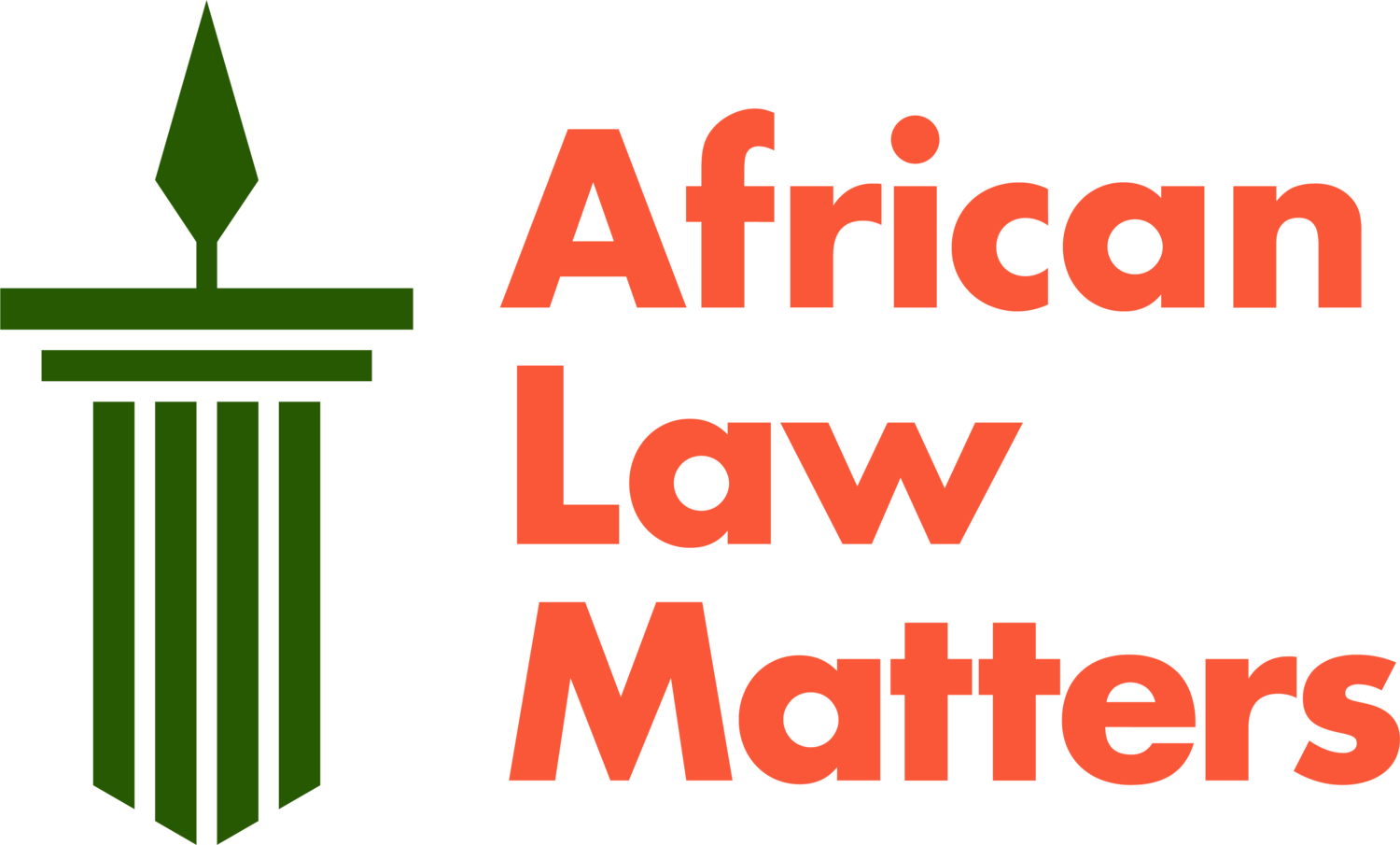Gen-Z Demonstrations and Kenya’sConstitutionalism
6/23 DC Protest for Kenya #6" by deebr츩 is licensed under CC BY-ND 2.0.
In June and July 2024, Kenya witnessed a series of demonstrations dubbed the “Gen-Z” protests due to the predominantly young demographic participants. These protests were initially ignited by President Ruto’s attempt to impose taxes through the Finance Bill 2024 (FB24) on essential goods such as bread (sec.42), vegetable oil (sec.41), and sanitary towels (sec.45).
Such tax proposals appeared to conflict with the state’s human rights obligations under the 2010 Constitution of Kenya, (CoK) which imposes a duty on the state to observe, respect, protect, promote, and fulfil rights (art.21). The CoK further guarantees the right to the highest attainable standards of health, including reproductive health and the right to adequate food of acceptable quality (art.43).
If implemented, these taxes would have hindered the realisation of social economic rights, as they targeted essential items necessary for a decent life. Price increases would place these goods beyond reach, especially for poor households. While these specific tax proposals were ultimately abandoned before FB24 was passed, public outrage toward the bill had evolved into broader political grievances. At its core, the protests reflected widespread discontent with President Ruto’s administration. In response to these demonstrations, the government’s actions highlighted ongoing challenges within Kenya’s constitutional framework, especially concerning the enforcement of political rights, the balance of powers, and the role of the opposition.
Context
The demonstrating youths had announced plans to escalate their activities on Tuesday 25 June 2024, the day the FB24 was set to be passed by the National Assembly (NA). Conversations on the X platform confirmed this date, referring to the planned protests as the “Occupy Parliament” demonstrations. Indeed, on 25 June 2024, large crowds of youths gathered not only in different parts of Nairobi’s Central Business District (CBD) but also in other major towns demonstrating against the FB24. Some demonstrators even called for President Ruto's resignation.
In Nairobi, protestors managed to access the CBD despite a heavy police presence. A part of the crowd invaded the Supreme Court building, gaining access to some offices, while others stormed into the office of the Governor of Nairobi, destroying furniture. Most notably, some protesters made their threat to “occupy” parliament real. They entered the Senate, sat on the Senate chairs—including the Speaker’s seat—took away the parliamentary mace, and helped themselves to food in the parliamentary cafeteria. Tragically, some protestors were gunned down during the event. In addition, the protests caused a significant disruption of businesses and normal life in Nairobi and its CBD. Similar incidents of invasions and vandalizations were witnessed in other major towns.
Government reaction and disregard for political rights
Following the 25 June 2024 demonstrations, a visibly angry President Ruto addressed the nation. He profiled the demonstrations as having been hijacked by criminals. This was to justify outrightly brutal police response. He labelled the breach of Parliament as “treasonous” and declared that the government would pursue those who planned and financed the demonstrations. He also deployed the military to assist the police. Notably, he did not condemn police brutality, nor did he address the issue of violations of the right to life (art. 26) at the instance of deaths caused by security personnel. These are typical qualities of a full-blown repressive regime, but which find predictable expressions in hybrid domains.
“…as long as Kenyans remain unwilling to be passive consumers of political outcomes, the constitutional ideals outlined in the 2010 Constitution can see greater enforcement.”
The Kenyan government’s reaction to the protests affirms the claim that Kenya embodies a form of hybrid constitutionalism. While political rights such as the right to assemble and protest are recognised and typically enforced, they remain conditional. These rights are respected only to the extent that they pose no serious threat to the current regime. When such a threat arises, as was the case with the Gen-Z protests, these rights are disregarded and effectively reduced to paper rights.
Institution’s predilection
These demonstrations revealed the pervasive subservience of Kenya's political institutions to informal, executive-centred politics, despite the constitutional provisions for separation of powers and checks and balances. Under the CoK, Parliament is made up of a bicameral house (Senate and NA) distinct from the Executive (Chapter 9, of CoK). Prior to 2010, Kenya had a unicameral legislature whose members also composed the Executive. In the 2010 Constitution, a pure mode of separation of powers was adopted. As a result, Members of Parliament must resign if they are to take up an appointment in the cabinet. This was intended to strengthen separation of powers and to promote checks and balances. Despite these design choices, the de facto practice is different.
The protests highlighted the dominance of informal political processes, often centred on the presidency, over formal institutions. Political institutions such as the National Assembly, the Senate, and their committees are subject to party politics, which are, in turn, shaped by the President. This dynamic was evident in the handling of the FB24: despite widespread public outcry, a parliament with a majority from the ruling party did not veto the bill. Instead, the NA passed it after a Party Group meeting of the ruling United Democratic Alliance, held at State House on the morning of 25 June 2024. Even proposed amendments, which should have been presented in the NA, were instead announced at the State House in the President’s presence. It is also the President who rejected FB24 in response to the protests. Members of the NA had remained unbowed.
Finally, the usual opposition co-optation
Further, these demonstrations also reaffirmed the place of co-optation of opposition politicians as an enduring aspect of Kenya’s multi-partyism. Since independence, this appears to be a running thread in Kenya’s governance. As early as 1964, the main opposition party, the Kenya African Democratic Union (KADU), dissolved itself and joined the ruling Kenya African National Union (KANU). This paved the way for a de facto single-party state especially after Kenya People’s Union (a KANU breakaway group) was proscribed in 1969. When multi-party politics were restored in the early 1990s, opposition co-optation was equally restored after 1997, with the formation of “New KANU”, and has since been a major feature of post-1990 constitutionalism in Kenya.
Even after the enactment of the 2010 Constitution, the main opposition candidate and figure Raila Odinga has twice—in three general elections—joined the ruling government through coalition arrangements. In 2017, this was achieved through the Building Bridges Initiative (BBI). Following the Gen-Z demonstrations and the dissolution of the cabinet, President Ruto formed a Broad-Based Government, bringing several members of Odinga’s Orange Democratic Movement (ODM) into cabinet as secretaries. This ongoing co-optation weakens opposition politics and diminishes the democratic character of parliament, even as it contributes to restoring stability amid the political volatility that has followed each presidential election since 2007.
Conclusion
The Gen-Z demonstrations ultimately lost momentum and came to an end. This was ostensibly due to the co-optation of Odinga’s ODM party into government as well as some ad hoc manoeuvres by President Ruto including the withdrawal of the FB24. While this review may create an impression that the demonstrations merely reinforced what is already known about Kenya’s ongoing struggle for constitutional rule, they also highlighted the potential for Kenya’s constitutionalism to evolve towards a more democratic model through civilian vigilance and popular uprisings.
Indeed, after the demonstrations, the NA while vetting the newly appointed cabinet secretaries rejected one of President Ruto’s nominees, one Ms. Soi Lan‘gat. Additionally, it had not been anticipated—until the protests of June/July 2024—that a government Bill could be withdrawn due to civilian picketing. All these developments underscore the hope that, as long as Kenyans remain unwilling to be passive consumers of political outcomes, the constitutional ideals outlined in the 2010 Constitution can see greater enforcement.


